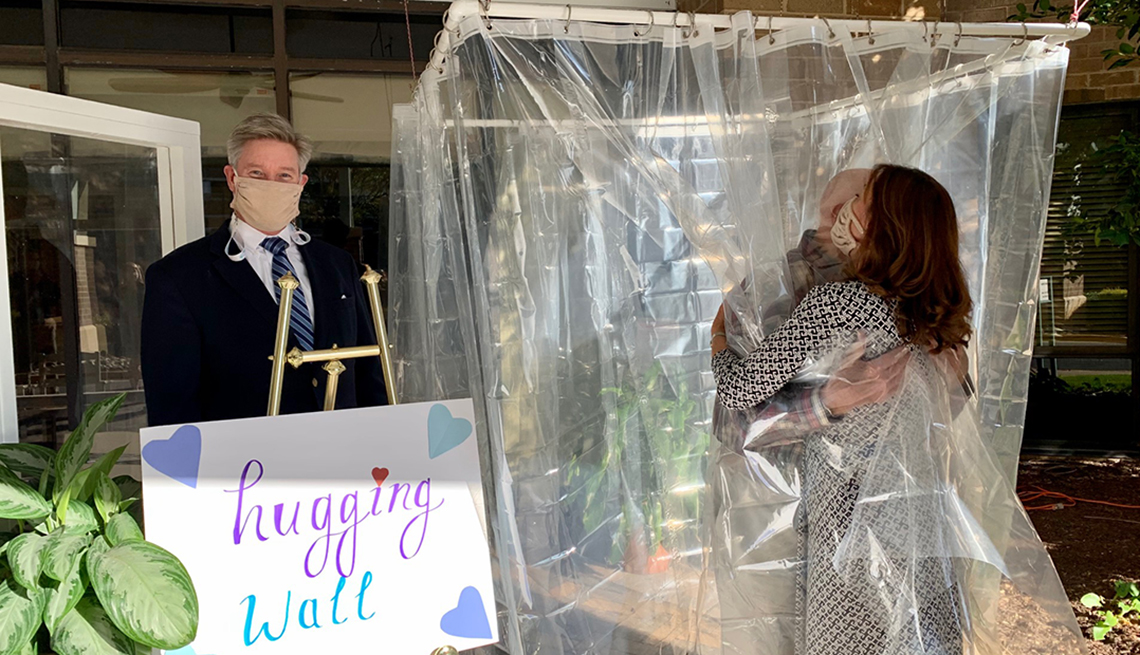AARP Hearing Center
Who would have thought a simple shower-curtain liner could do so much more than keep the bathroom floor dry? So observed Betsy Via, 82, after embracing her son, Rex Hodgson, 60, through a “hugging wall” — a sheet of clear plastic — set up at her senior living community in Virginia Beach, Virginia, a few weeks ago. It was the first time she and her husband, David, 92, had seen (and, certainly, touched) Rex, who lives in Richmond, Virginia, in person since COVID-19 began spreading in earnest across the country last March.
The Vias live at Westminster-Canterbury on Chesapeake Bay, a nonprofit community overlooking the ocean that has about 700 residents. It has two hugging walls, each of which looks less like a wall than a very revealing shower stall. It's a simple concept: A plastic shower liner is attached with curtain rings to a pipe that hangs in a square from the ceiling. The resident goes inside the three-sided curtained space while their children or grandchildren or whomever they feel like hugging remains on the outside. They hug through the plastic, which is loose enough to allow for a full embrace. The curtain is later fully disinfected with an electrostatic sprayer.
"It was a bit crunchy,” says Betsy, “but it worked, and we loved it."
The staff decided to set up the first hugging wall in early November, says Ben Unkle, CEO of Westminister-Canterbury, because, “Everyone needs their holiday hugs.” It's located near an outside entrance (so a family doesn't have to walk too far into the building), in one of the community's visitation stations — living-room-like areas with plastic partitions between visitors and residents that can be booked for 45 minutes. The stations are then cleaned for 15 minutes before the next group enters. The hugging wall was so popular that the staff added a second one just before Thanksgiving — both were booked back-to-back by cuddle-craving families over the holiday weekend.
Amesh A. Adalja M.D., senior scholar at Johns Hopkins Center for Health Security in Baltimore, says that using this sort of physical barrier is a safe option during the pandemic and is ideal “for people who are very risk averse” and “in places where they're trying to eliminate as many risks as possible.”






































































